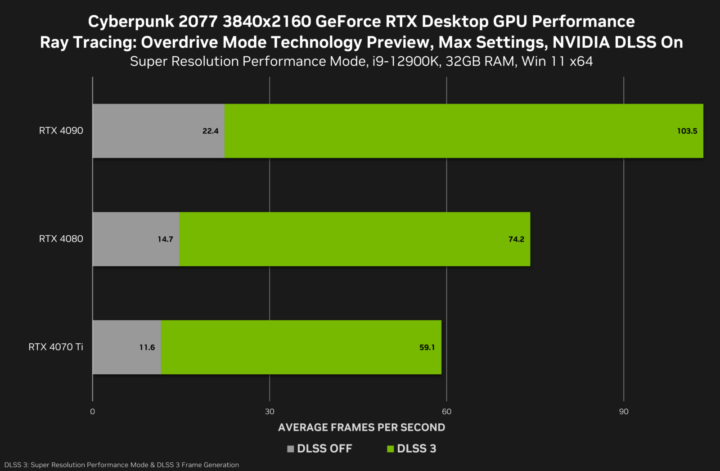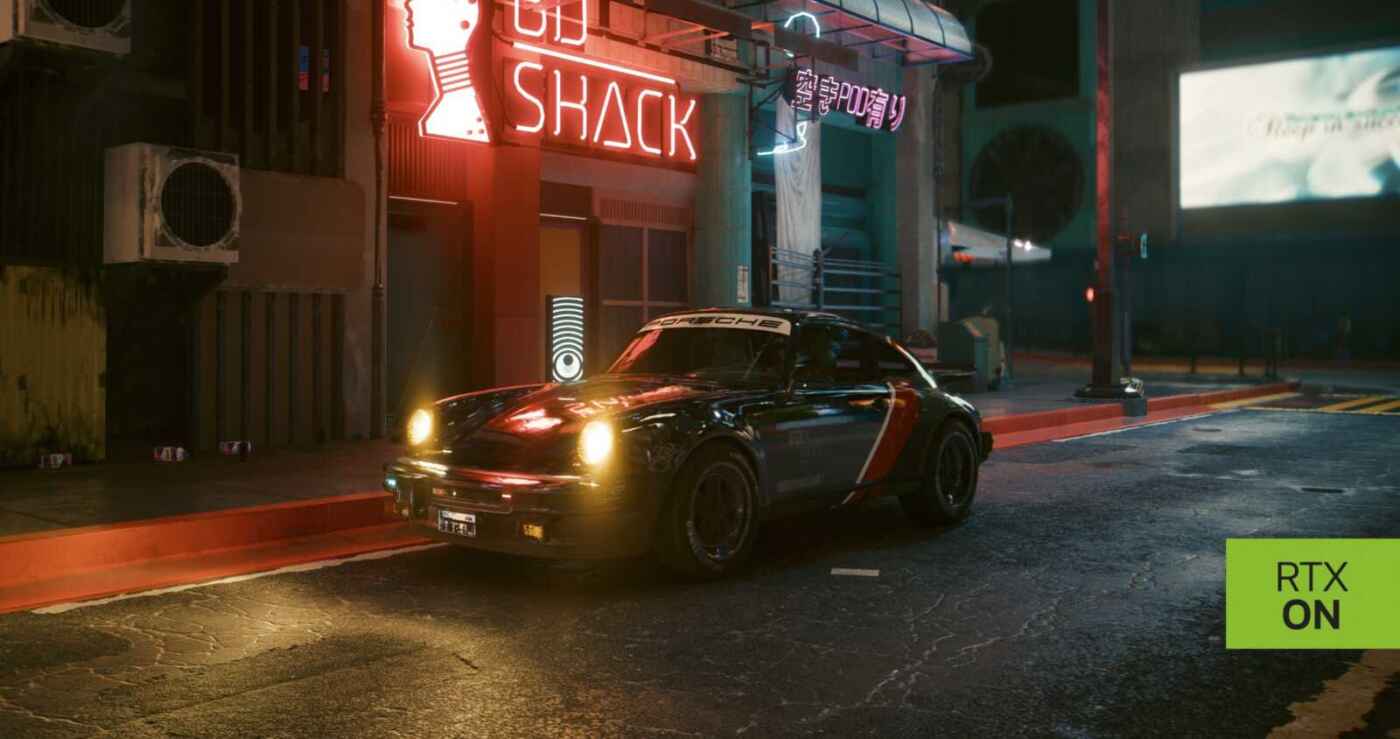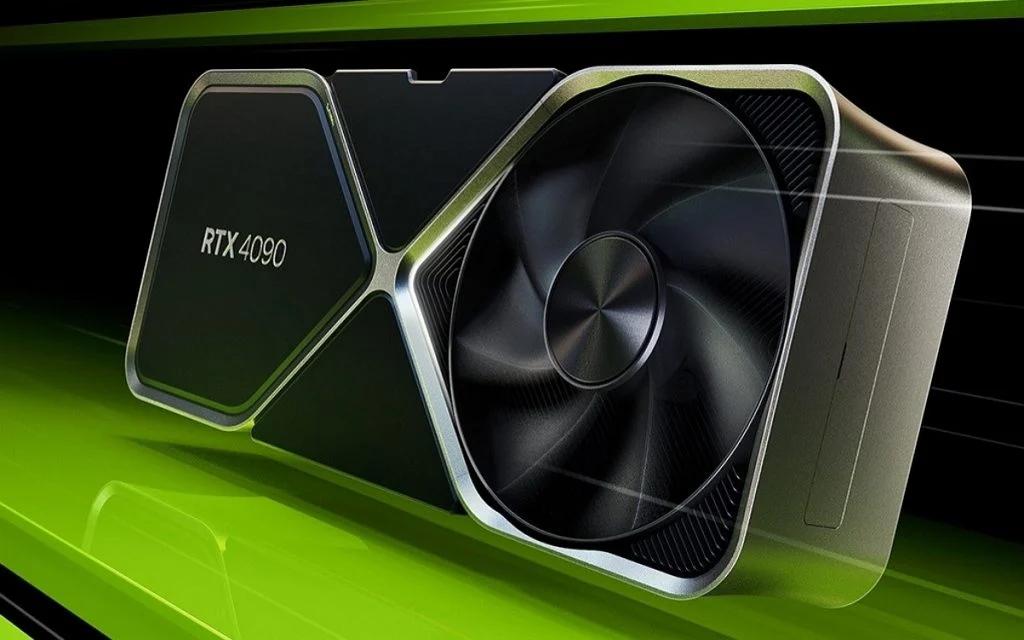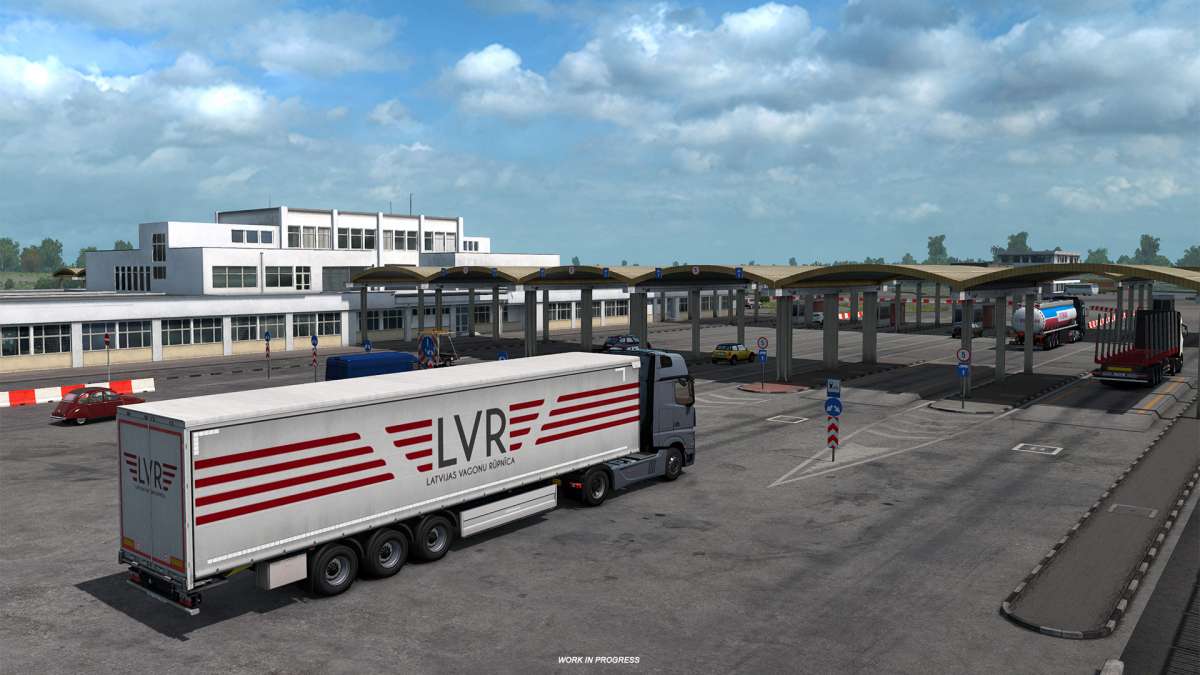CD PROJEKT RED a sorti la mise à jour 1.62 de Cyberpunk 2077 avec la technologie Ray Tracing: Overdrive Mode qui améliore les rendus déjà impressionnants du jeu. Cette nouvelle mise à jour permet le rendu en full ray tracing, aussi connu sous le nom de path tracing, qui simule de manière précise la lumière dans tout l’environnement du jeu. Cette technique est en outre utilisée dans l’industrie cinématographique pour créer des effets spéciaux indiscernables de la réalité. Jusqu’à présent, le rendu en temps réel en full ray tracing était impossible à cause de ses demandes en ressources GPU. Toutefois, l’IA et le DLSS de nVidia ont réussi à changer la donne.
Auparavant, des techniques séparées étaient employées pour les ombres ray-tracing, les réflexions et l’illumination globale pour un petit nombre de sources lumineuses. Avec le rendu en full ray tracing, les propriétés de la lumière émise par un nombre virtuellement illimité de sources sont modélisées, ce qui permet d’obtenir des ombres, des réflexions et une illumination globale physiquement correctes sur tous les objets. Cette technique est encore en développement, mais elle constitue un avant-goût de ce que sera le futur du rendu en full ray tracing.
Les différents pipelines de rendu illustrés
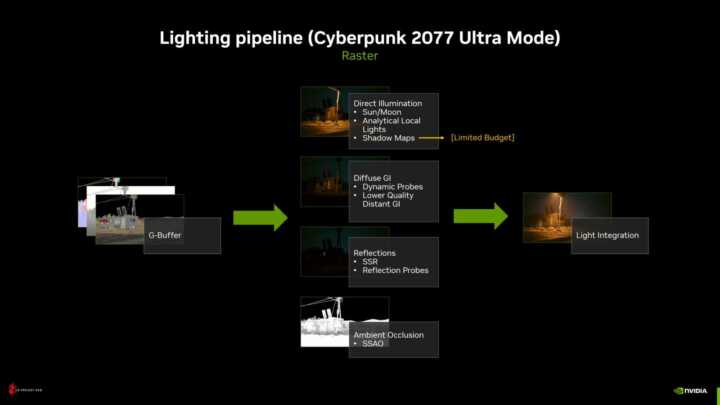
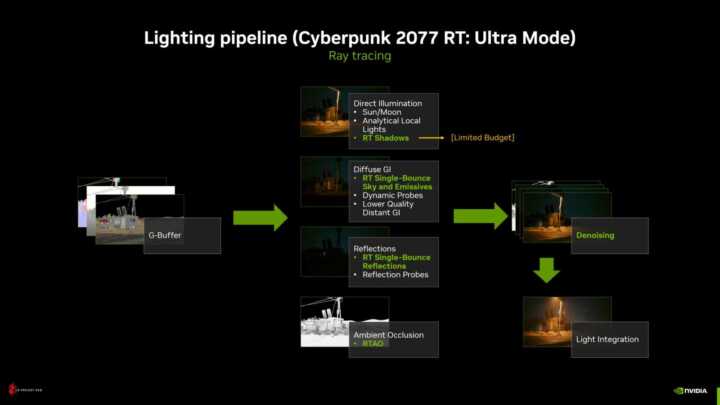
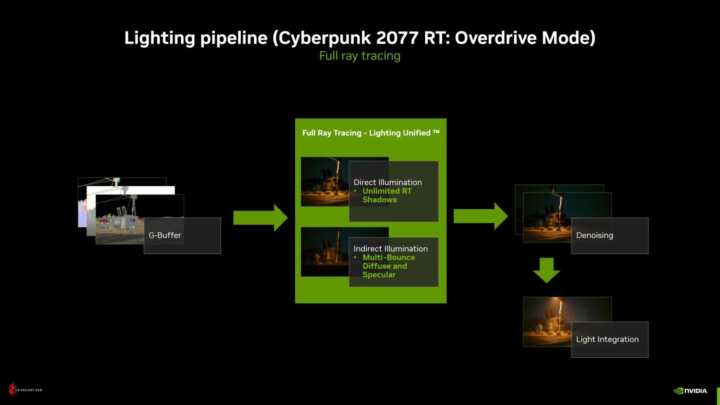
L’un des ajouts les plus significatifs de la technologie Ray Tracing: Overdrive Mode de Cyberpunk 2077 est le RTX Direct Illumination (RTXDI) de nVidia, un SDK qui permet aux développeurs de reproduire de manière réaliste la lumière dans les scènes avec de nombreuses sources lumineuses. Avec RTXDI, des milliers d’objets peuvent émettre de la lumière ray-tracing. Dans Cyberpunk 2077, chaque panneau néon, chaque lampe de rue, chaque enseigne lumineuse, chaque phare de voiture, etc., est ray-tracé, ce qui permet d’obtenir un éclairage précis des objets, des murs, des voitures en mouvement et des piétons.
En activant la technologie Ray Tracing: Overdrive Mode, les sources de lumière projettent maintenant toutes des ombres douces et physiquement correctes, ce qui est une prouesse jusqu’alors inimaginable avec les anciennes méthodes de rendu. Les joueurs bénéficient d’un meilleur rendu des ombres, avec plus de profondeur, de détail et de réalisme.
